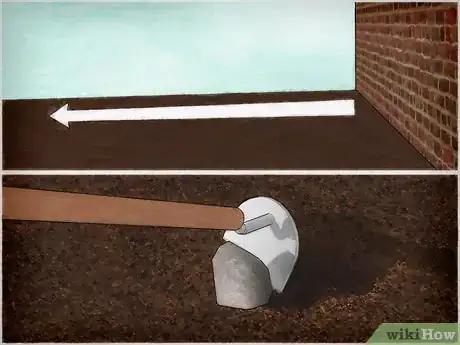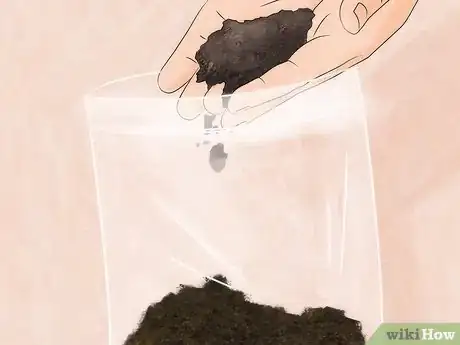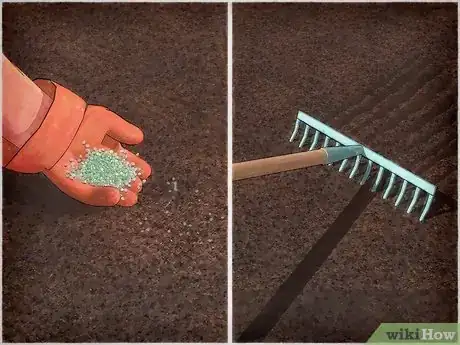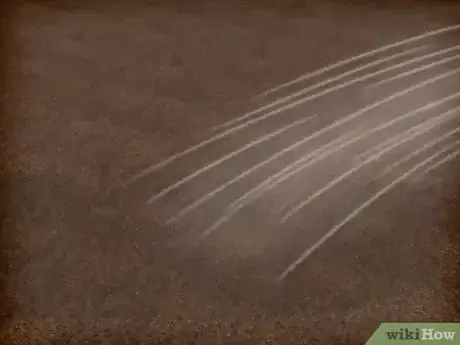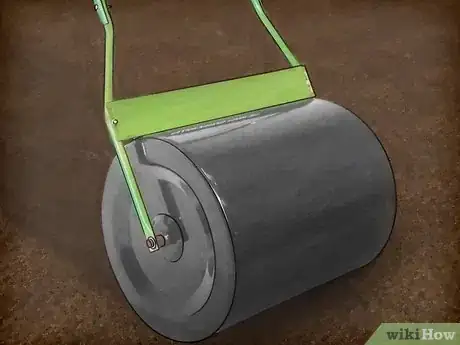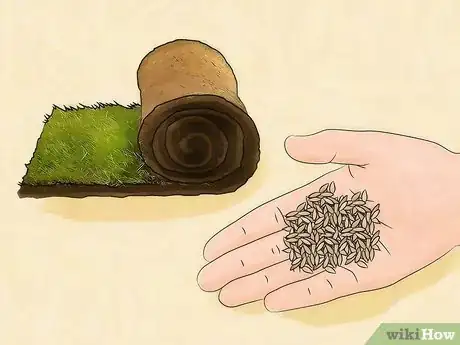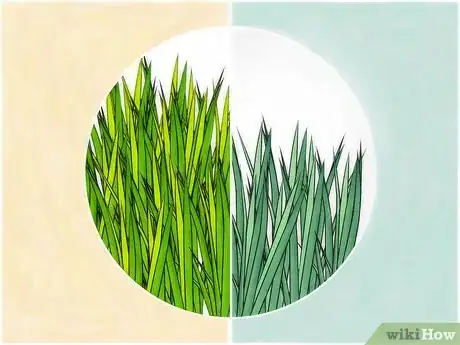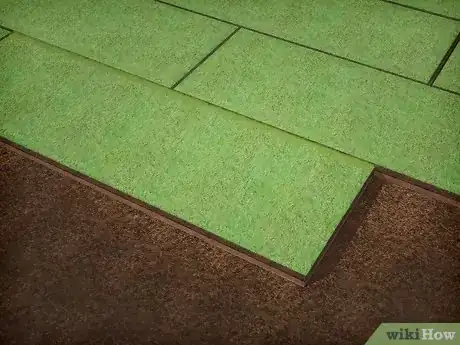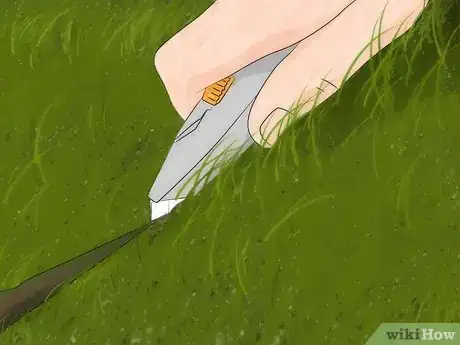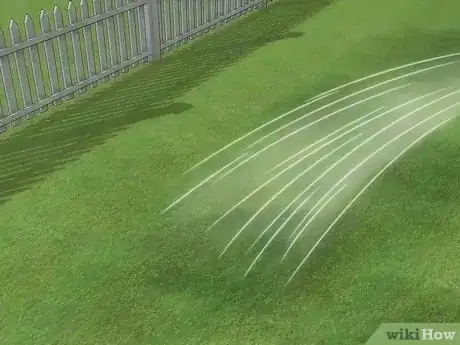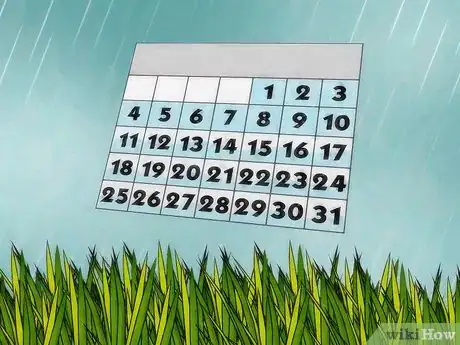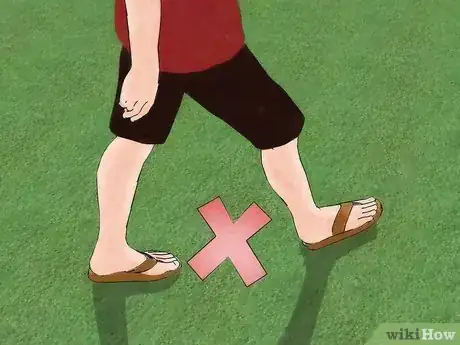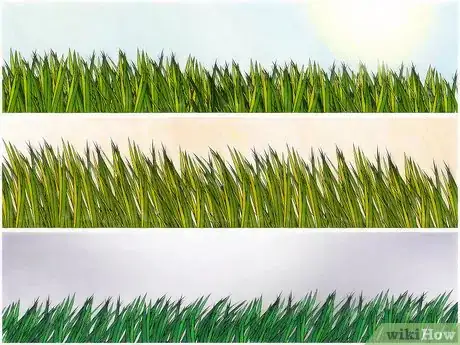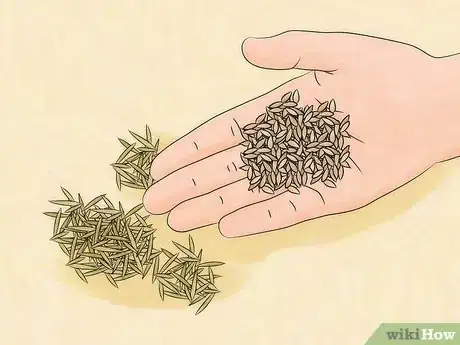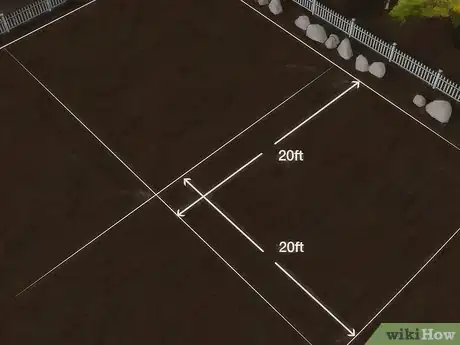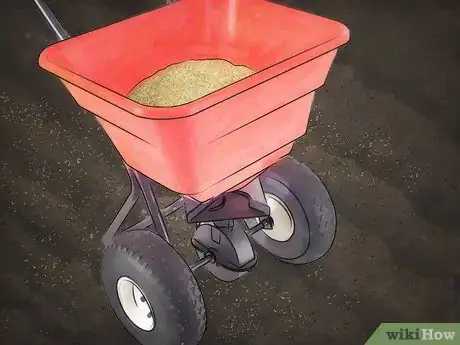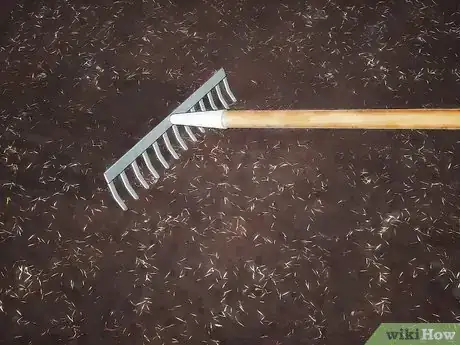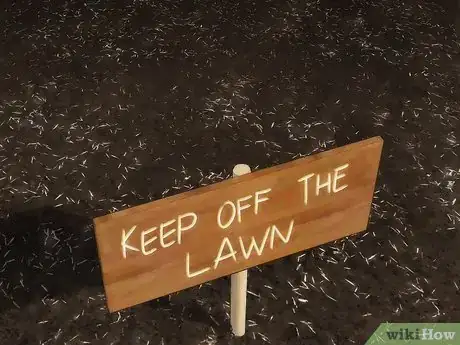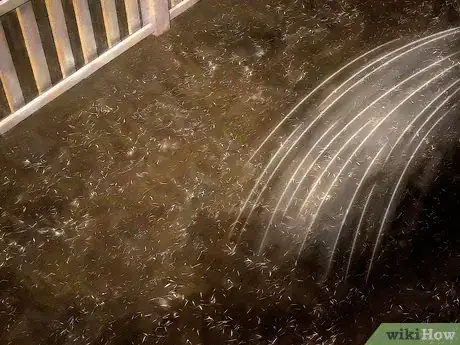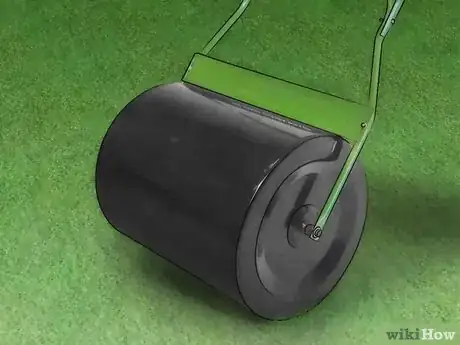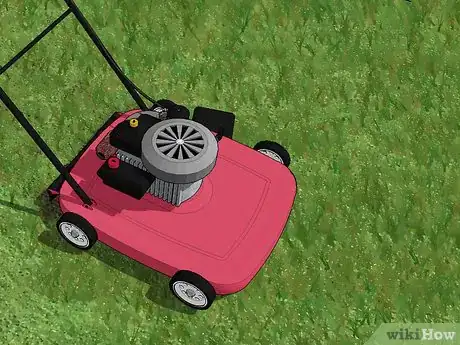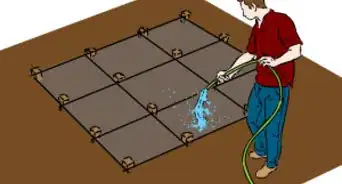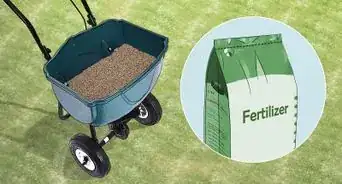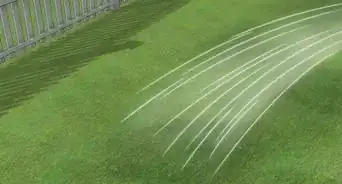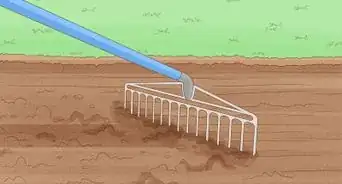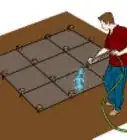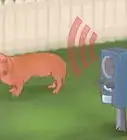This article was co-authored by Benjamin Hansen. Benjamin Hansen is a Landscape Contractor and the Owner of Artscape Gardens, a boutique landscaping company in Los Angeles, California. With over 12 years of experience, Benjamin specializes in transforming properties into aesthetic, functional, and drought-tolerant oases. Benjamin uses color scheme, dimension, and water conscious spaces to inspire the design and installation of soft scape, hardscape, patios, pathways, irrigation, drainage, fencing, concrete, lighting, and electrical work. Artscape Gardens covers all areas of the C-27 landscape contractor classification.
There are 13 references cited in this article, which can be found at the bottom of the page.
This article has been viewed 81,207 times.
Take the time to prepare your soil before laying a new lawn, so you can grow the sturdiest and healthiest lawn possible. Install sod (turf) if you want to establish a usable lawn quickly. Plant grass seeds instead if you want to save money, or enjoy the experience of making a lawn "from scratch."
Steps
Preparing the Soil
-
1Remove old plants with a hoe or machine. If you have old grass or weeds, remove these before laying a new lawn.[1] Use a grape hoe, also called a grub hoe, to remove grass from small lawns. For larger lawns, or to save time and effort, rent a sod cutter from a tool rental service.[2]
- Grass may be easier to remove when the soil is moist.
- If using herbicides, follow all product safety information and allow enough time for the herbicide to break down in the soil. Most modern herbicides such as 2-4D and glyphosate (Roundup) will break down within three weeks if used correctly.[3]
-
2Grade the soil. Grass seed will grow more evenly and root more firmly on relatively flat soil. While sod (turf) can be laid on slopes, grading soil is still recommended for flatter areas. To promote good drainage away from buildings, grade soil to a 1 or 2% slope away from a building.[4] In other words, the soil should drop 1–2 feet across a distance of 100 ft (or 1–2 meters down per 100m distance).
- While grading the soil, remove rocks and other large objects that could interfere with the lawn's roots. Do not bury construction debris or other materials not naturally present in your lawn, as this could harm the lawn roots.[5]
Advertisement -
3Improve the soil (if necessary). A lawn needs at least 4–6 inches (10–15 centimeters) of high quality topsoil in order to grow and stay healthy.[6] If your soil has a sandy or clay-like texture, use a shovel to thoroughly work in organic material to this depth. You may use compost, rotted manure, peat, or high-quality topsoil purchased at a garden supply store.[7]
- Do not just place the new material over the old. This can create layers of soil that can be difficult for water or roots to penetrate.[8] Some varieties of perennial rye can grow roots well over a foot long, which is why well-worked soil and annual aeration is so important.
-
4Send in samples for a soil test (optional). If you want detailed information on your soil, take soil samples and send them to a soil testing laboratory. The laboratory will conduct tests and tell you whether additional nutrients or pH-altering materials are recommended for your lawn.[9]
- If you are in the US, look for a Cooperative Extension office in your area. Most of these will provide soil testing services.
- If you do not have access to a soil-testing laboratory, you may find some information at home by testing your soil pH. Most larger retail nurseries carry home test kits. Most lawns prefer a soil pH of about 6.5–7.
-
5Rake in starter fertilizer lightly. Starter fertilizer is high in phosphorus, which encourages root growth for new grass. Phosphorus is displayed using the middle number on the fertilizer package, so starter fertilizers are sometimes labeled 5-10-5 or 10-20-10. Always use the amount recommended on the fertilizer packaging, as too much fertilizer can kill plants. Do not till the fertilizer in deep; just rake it gently into the surface soil.[10]
- If starter fertilizer is not available, use a balanced fertilizer (for instance, a 10-10-10 fertilizer).
-
6Water the soil and let it settle for one week. Assuming you needed to add in new soil or make significant grading adjustments, water in the new soil. For best results, let it settle for one week before planting.[11]
-
7Roll the soil lightly. Grass will grow best when air pockets are removed from the soil, but not when the soil is too hard and compacted for roots and water to easily move through. Roll a light garden roller over the surface of the soil, filled no more than 1/3 of the way full of water.
-
8Decide which method of lawn planting to use. You may purchase strips of already-growing grass in the form of sod, called turf in some countries. This can take some effort to lay down, but will become usable soon after installation.[12] Grass seed is much cheaper, but can take months to become a usable lawn, a constant fight with undesirable vegetation, and a year or two to become even and attractive.[13] Grass seed is not recommended for significant slopes, as it can wash downhill during rain. Continue on to one of the sections below, depending on your choice.
- There are other, less common methods of installing a lawn. "Plugs" are small pieces of sod that are planted at intervals, then allowed to spread across bare soil. "Sprigs," also called "stolons," are stems of grasses that creep along the ground, such as Bermuda or Zoysia. These can be treated as seeds, but take care that the larger nodes on the sprigs are under the soil and watered regularly.[14]
Laying Sod (Turf) for a New Lawn
-
1Choose a sod variety. Sod, called turf in some countries, are strips of already-growing grass attached to soil. Grass comes in many varieties, so select one suitable for your climate and your intended purpose. Warm-season grass thrives during summer heat, while cool-season grass prefers cooler weather.
- Grass types are discussed in more detail at the start of the section on grass seeds. Sod is often easier to choose, since you can see and feel the grass before purchasing.
-
2Purchase freshly cut sod. Grass cannot survive indefinitely on sod, so purchase newly cut sod. The attached soil should be moist, not dried out and crumbly.
- Install the sod right away. Sod is often sprayed with a light dose of liquid nitrogen right before cutting. When left stacked on a pallet too long, the nitrogen can create heat that kills the sod.
-
3Lay out the sod in a staggered pattern. Lay out one line of sod along the edge of your lawn, placing the sod end to end. Start the next line of sod staggered with the first, as though you were laying down a line of bricks. Tuck or roll the seams together for best results, as though you were seaming carpet. Try to avoid stretching the sod or overlapping two pieces.
-
4Trim the sod with a utility knife or sharpened trowel. If you need to fill a bare patch of dirt, or remove a section of sod that is overlapping another piece, cut a piece of sod into smaller pieces using a utility knife or a sharpened trowel.[15] Make adjustments until there are no gaps between sod, and no overlaps either.
-
5Water heavily during the first ten days. Give your new lawn a thorough watering after installation. The water should go down all the way through the sod, into the soil beneath. When you lift a corner of the sod after this watering, it should be dripping wet.[16] Water frequently during the first ten days, keeping the new lawn moist.
- Water during the early morning when possible, to give the grass time to dry out before fungus can establish itself.
- Do not water so much that it saturates the soil and causes pooling, as that will lift the sod off the soil and interfere with root growth.
-
6Reduce watering frequency. After the first ten days, water less frequently. Continue to water heavily enough to work water well into the topsoil, as this encourages root growth. Check the edges of the lawn for wilting, and water more heavily there if necessary.
-
7Avoid walking on the new lawn. Avoid using the lawn during the first week or so, and use it as lightly during the first month. After this time, the lawn should be well-established, and can be used as usual.
-
8Mow only when the lawn is well-established. Let the new lawn grow out to at least 2.5 in (6.5 cm) before mowing. Do not mow while the sod is wet and soft, and make sure the lawn mower blades are sharp. Light, hand-pushed mowers are recommended until the sod has established deep roots, which can take several weeks.
Starting a Lawn by Seed
-
1Narrow down seed types by climate. Most "warm-season" grasses go dormant and brown in cool temperatures, while "cool-season" grasses will not stay green during summer heat.[17] Decide which type is best for your climate, or consult a local experienced in planting lawns, or based on the current time of year and temperature.
- Cool-season grasses, such as Kentucky bluegrass, ryegrass, and fescues, should be sown in autumn, when upper soil temperatures are between 68 and 86ºF (20–30ºC).[18]
- Warm-season grasses, such as bahiagrass, centipede grass, carpet grass, and buffalo grass are best sown in spring or summer, when upper soil temperature is between 68 and 95ºF (20–35ºC).[19]
-
2Choose a specific seed type. If you have one particular look in mind, you may want to pick a single grass species. More commonly, grass seeds are sold in blends (varieties of a single species) or mixtures (combinations of multiple species) to provide better resilience to disease and environmental factors. Browse blends and mixtures to find one suited to your lawn's sunlight levels, your preferred grass texture, drought resistance, and durability to foot traffic.[20] Avoid purchasing low-quality seed blends using the following tips:
- Look for advertised germination percentages above 75%, and an expiration date no more than ten months in the past, for best sprouting results.[21]
- Look for grass seed containing less than 0.5% weed seeds.
- Avoid annual ryegrass, which dies permanently in winter. Avoid rough "agricultural" perennial ryegrass, or mixtures that include more than 20% of any type of ryegrass, or it can take over your lawn with its rough texture and appearance.[22]
- Avoid grass seeds sold without an identifying variety.
-
3Work on the lawn in sections. Divide large lawns into sections measuring approximately 20 ft x 20 ft (6m x 6m). Work on each section separately, following the steps below for that section before moving on to the next one. This lets you divide your work into multiple work sessions if necessary, while ensuring that every section receives all the care it needs.[23]
-
4Sow the grass. Spread grass seed using a seed distributor or lawn spreader if possible, to ensure even coverage. Drop the seeds by hand if no other options are available, but always refer to the recommended sowing density on the grass seed package. For even distribution, sow half the recommended seeds while walking in parallel rows back and forth lengthwise across the lawn, then sow the remaining half while walking in rows widthwise. If there is no recommended seed density on the packaging, use the following guidelines:[24]
- Utility grass (designed for moderate to heavy use) can be sown at ½ ounces per square yard (15–20 grams per square meter).
- Most "ornamental" grass (designed for light use) can be sown at ¾ oz per sq yd (20–25g per sq m).
- High quality ornamental grass can be sown at 1 oz per sq yd (30g per sq m).
-
5Lightly rake the soil. Use a rake to cover the majority of the seeds with a light layer of soil, no deeper than 1/8 inch (3 mm).[25] This protects the seeds from birds and wind, but still makes it easy for the young grass sprouts to push through the soil.[26]
- For grass seeds sown in the summer, a thin layer (¼ in. or 6mm) of mulch can help retain moisture.[27] Straw or hay mulch is not recommended, as it may contain weed seeds.
-
6Stay off the lawn while it grows. Put up signs or temporary barriers if necessary to keep people off the lawn. Do not step on the soil at all until the grass has germinated, which usually takes 10–14 days. Walk across it as infrequently and lightly as possible for about six months after planting.
-
7Water the seeds. Letting the seed dry out completely will prevent germination. To prevent this, water the seeds immediately after planting with a light sprinkler, just to the point of "puddling." Repeat frequently throughout each day until sprouts appear. After this occurs, water less often, but more heavily, now that the established plants won't be washed away.[28] [29] The exact frequency of watering depends on the temperature, humidity, and grass variety. Increase the watering frequency if the grass turns brown, unless it is the dormant season (winter for warm-season grass, or summer for cold-season grass).
- If using a blend with Kentucky bluegrass, keep watering with the gentle, more frequent schedule after the first sprouts appear. Look closely for the next few days for a new layer of small seedlings to sprout, as "KBG" can take longer to germinate than other species.[30] After this second wave of sprouts appears, you can switch to a less frequent watering schedule.
-
8Roll the lawn once the grass is 2–3 in (5–7½cm) tall. Once the grass reaches this height, press it down with a light garden roller – either an empty metal one, or a plastic one filled with about 1 gallon (4 liters) of water.[31] If you do not have a garden roller, you may attempt to lightly press the grass into the soil with the wheels of a rotary mower, or by treading across it carefully, but try not to press it so hard that the soil becomes hard and compacted.[32]
-
9Mow the lawn once the grass is 3-4 in (7½–10cm) tall. Do not mow a new lawn until it reaches this height, as it needs uninterrupted time to focus on growing roots. Mow in small increments once it reaches this height, no more than ½ in. (1¼ cm) at a time, and wait at least a few days between mowing.[33]
- Once the grass has reached the desired height and the lawn is well-established, mow according to preference. Never remove more than 1/3 of the grass height at a time.
Expert Q&A
-
QuestionHow do you overseed a lawn after it's established?
 Jeremy YamaguchiJeremy Yamaguchi is a Lawn Care Specialist and the Founder/CEO of Lawn Love, a digital marketplace for lawn care and gardening services. Jeremy provides instant satellite quotes and can coordinate service from a smartphone or web browser. The company has raised funding from notable investors like Y Combinator, Joe Montana, Alexis Ohanian, Barbara Corcoran and others.
Jeremy YamaguchiJeremy Yamaguchi is a Lawn Care Specialist and the Founder/CEO of Lawn Love, a digital marketplace for lawn care and gardening services. Jeremy provides instant satellite quotes and can coordinate service from a smartphone or web browser. The company has raised funding from notable investors like Y Combinator, Joe Montana, Alexis Ohanian, Barbara Corcoran and others.
Lawn Care Specialist Cut the lawn shorter than normal and rake the lawn to loosen the top layer of soil. This will prep your lawn for the seed.
Cut the lawn shorter than normal and rake the lawn to loosen the top layer of soil. This will prep your lawn for the seed. -
QuestionHow can I make sure my new grass will be really green?
 Benjamin HansenBenjamin Hansen is a Landscape Contractor and the Owner of Artscape Gardens, a boutique landscaping company in Los Angeles, California. With over 12 years of experience, Benjamin specializes in transforming properties into aesthetic, functional, and drought-tolerant oases. Benjamin uses color scheme, dimension, and water conscious spaces to inspire the design and installation of soft scape, hardscape, patios, pathways, irrigation, drainage, fencing, concrete, lighting, and electrical work. Artscape Gardens covers all areas of the C-27 landscape contractor classification.
Benjamin HansenBenjamin Hansen is a Landscape Contractor and the Owner of Artscape Gardens, a boutique landscaping company in Los Angeles, California. With over 12 years of experience, Benjamin specializes in transforming properties into aesthetic, functional, and drought-tolerant oases. Benjamin uses color scheme, dimension, and water conscious spaces to inspire the design and installation of soft scape, hardscape, patios, pathways, irrigation, drainage, fencing, concrete, lighting, and electrical work. Artscape Gardens covers all areas of the C-27 landscape contractor classification.
Licensed Landscape Contractor You have to fertilize it, and, most importantly, and you can't fertilize it when it’s hot. Top granular fertilizer is probably the best approach biannually. Do it in the fall, when the temps cool down, and then repeat it in the spring.
You have to fertilize it, and, most importantly, and you can't fertilize it when it’s hot. Top granular fertilizer is probably the best approach biannually. Do it in the fall, when the temps cool down, and then repeat it in the spring.
Warnings
- A young lawn may be extra susceptible to death by weedkiller. Remove weeds by hand instead, until the lawn is at least six months old.⧼thumbs_response⧽
Things You'll Need
- Seeds or sod (turf)
- Hoe
- Topsoil or compost or other organic material
- Garden roller
- Starter fertilizer
- Rake
- Utility knife or sharpened trowel (for sod)
References
- ↑ Benjamin Hansen. Licensed Landscape Contractor. Expert Interview. 6 October 2020.
- ↑ http://www.popularmechanics.com/home/improvement/lawn-garden/1273466
- ↑ Benjamin Hansen. Licensed Landscape Contractor. Expert Interview. 6 October 2020.
- ↑ http://urbanext.illinois.edu/lawntalk/planting/soil_and_site_preparation.cfm
- ↑ http://urbanext.illinois.edu/lawntalk/planting/soil_and_site_preparation.cfm
- ↑ http://www.northscaping.com/IZArticles/TS-0010
- ↑ http://urbanext.illinois.edu/lawntalk/planting/soil_and_site_preparation.cfm
- ↑ http://ipm.ucdavis.edu/TOOLS/TURF/SITEPREP/soilamen.html
- ↑ Jeremy Yamaguchi. Lawn Care Specialist. Expert Interview. 21 January 2019.
- ↑ http://urbanext.illinois.edu/lawntalk/planting/soil_and_site_preparation.cfm
- ↑ http://ipm.ucdavis.edu/TOOLS/TURF/SITEPREP/soilprep.html
- ↑ http://urbanext.illinois.edu/lawntalk/planting/planting_a_new_lawn.cfm
- ↑ http://www.northscaping.com/IZArticles/TS-0010
- ↑ http://ipm.ucdavis.edu/TOOLS/TURF/SITEPREP/sprigs.html
- ↑ http://www.popularmechanics.com/home/improvement/lawn-garden/1273466
- ↑ Jeremy Yamaguchi. Lawn Care Specialist. Expert Interview. 21 January 2019.
- ↑ http://www.homedepot.com/c/create_healthy_lawn_with_grass_seed_HT_BG_OD
- ↑ http://www.popularmechanics.com/home/improvement/lawn-garden/1273466
- ↑ http://www.popularmechanics.com/home/improvement/lawn-garden/1273466
- ↑ http://www.homedepot.com/c/create_healthy_lawn_with_grass_seed_HT_BG_OD
- ↑ http://www.homedepot.com/c/create_healthy_lawn_with_grass_seed_HT_BG_OD
- ↑ https://www.rhs.org.uk/Advice/Profile?PID=424
- ↑ http://www.northscaping.com/IZArticles/TS-0010
- ↑ https://www.rhs.org.uk/Advice/Profile?PID=424
- ↑ http://www.homedepot.com/c/create_healthy_lawn_with_grass_seed_HT_BG_OD
- ↑ http://www.northscaping.com/IZArticles/TS-0010
- ↑ http://ipm.ucdavis.edu/TOOLS/TURF/SITEPREP/seed.html
- ↑ http://www.northscaping.com/IZArticles/TS-0010
- ↑ http://www.homedepot.com/c/create_healthy_lawn_with_grass_seed_HT_BG_OD
- ↑ http://forums2.gardenweb.com/forums/load/lawns/msg0516101425159.html
- ↑ http://forums2.gardenweb.com/forums/load/lawns/msg0516101425159.html
- ↑ https://www.rhs.org.uk/Advice/Profile?PID=424
- ↑ http://www.northscaping.com/IZArticles/TS-0010
About This Article
To lay a new lawn, start by removing any plants from the soil, and making sure that the dirt is relatively flat and gently slopes away from the house. Then, sprinkle a 5-10-5 fertilizer on the surface and till it in with a rake. Next, water the soil and allow it to settle for a week. Afterwards, level the dirt with a roller and lay strips of sod down in a staggered pattern. If pieces of sod overlap, trim them with a utility knife so that there are no gaps between the strips. For the first ten days, water the sod heavily to encourage root growth, and avoid walking on your new lawn. For advice from our Landscaping reviewer on how to lay a new lawn using seed, read on!


